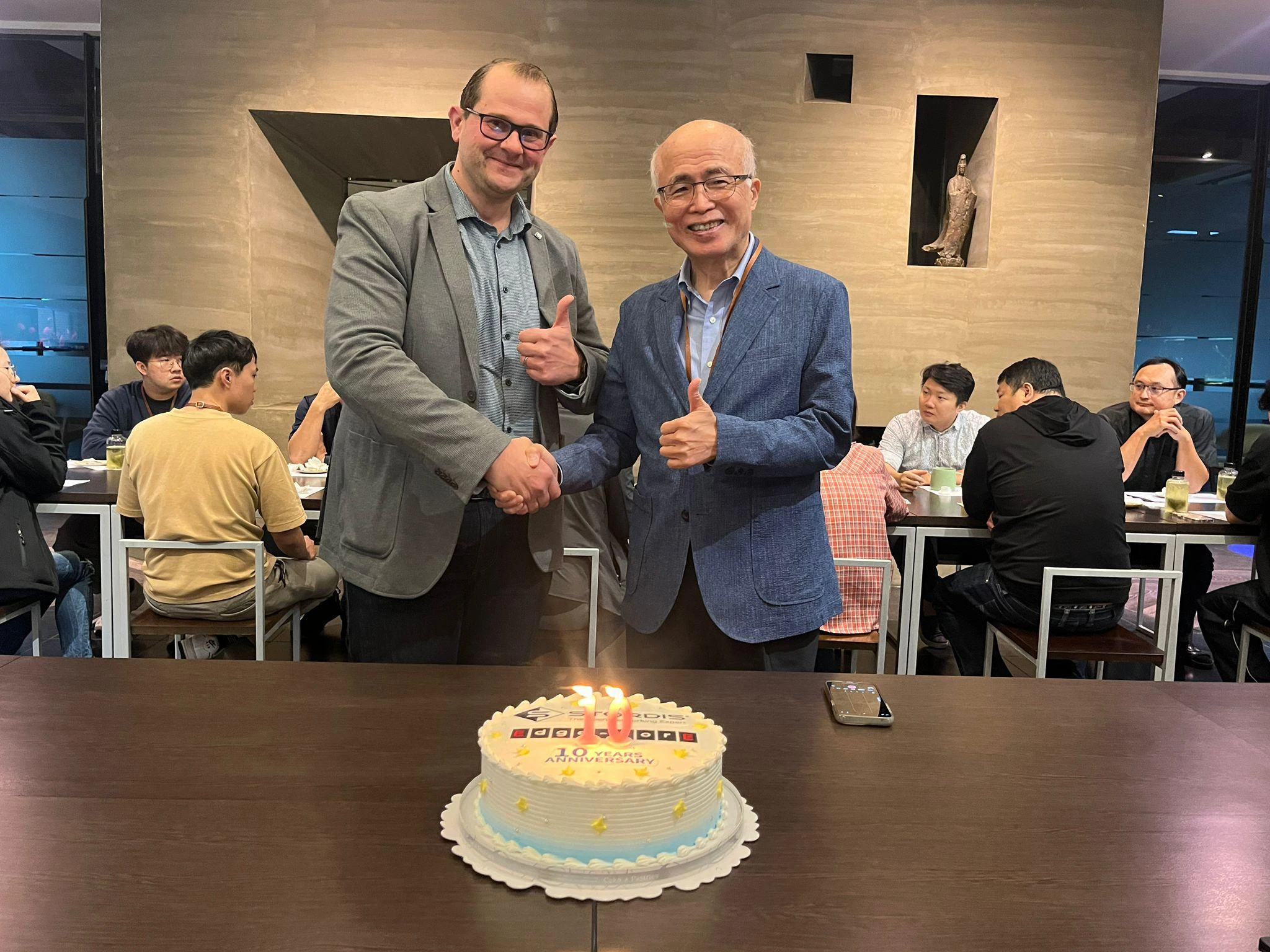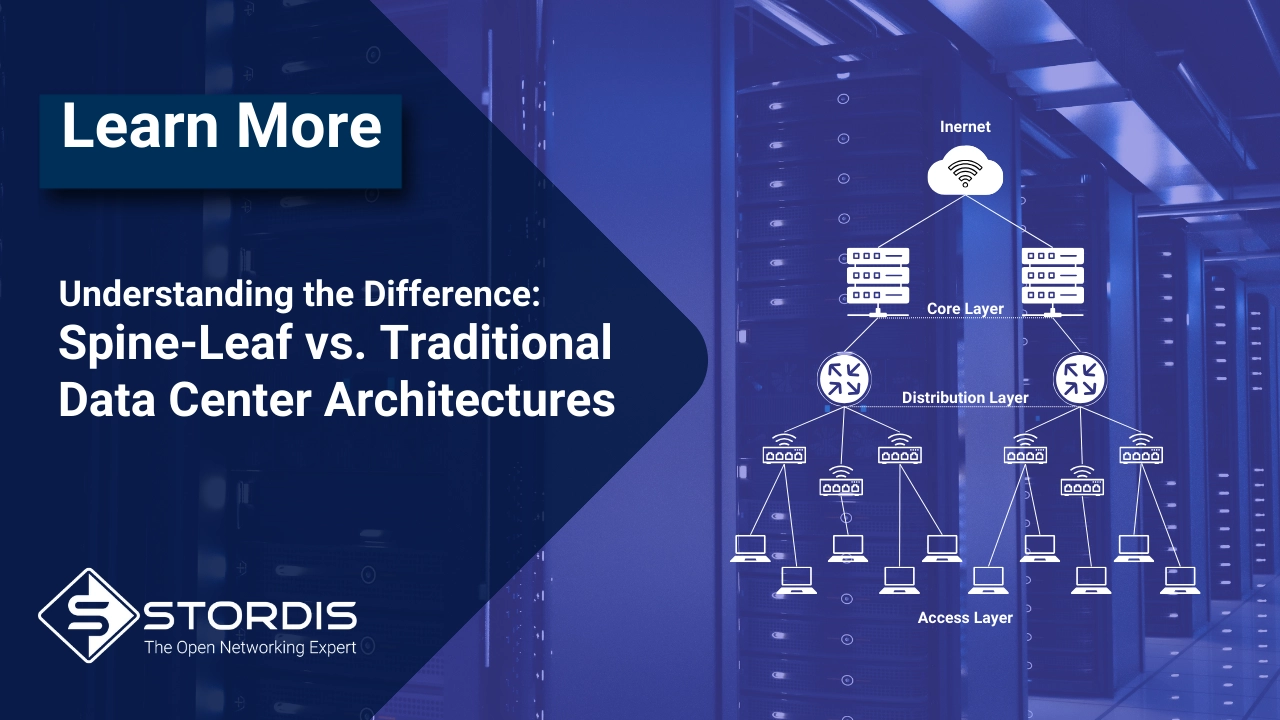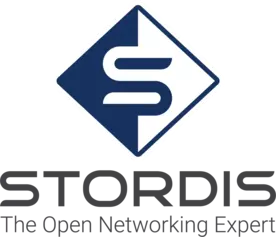- You have no items in your shopping cart
- Continue Shopping
OpenZR+ Technology: Enabling High-Performance 400G Long-Distance Optical Networks with Edgecore and Smartoptics

In today’s data-driven world, high-speed, long-distance data transmission is more important than ever. As service providers and data centers strive to meet the increasing demand for bandwidth and maintain control over their infrastructure costs, Dense Wavelength-Division Multiplexing (DWDM) has emerged as a crucial technology in coherent optical networks. This blog post delves into the exciting advancements in DWDM technology, with a special focus on the innovative OpenZR+ implementation, which promises to revolutionize the way service providers and data centers build efficient, converged IP/optical networks for both long-haul and DC to DC interconnection needs. Learn about the evolution of DWDM, the benefits it offers, and how Edgecore Networks and Smartoptics are offering comprehensive solutions that support OpenZR+ technology for the next generation of high-speed, long-distance data transport.
The Evolution of DWDM
Dense Wavelength-Division Multiplexing (DWDM) has been a driving force in the evolution of optical networks. It allows multiple data streams to be transmitted simultaneously over the same fiber optic cable by assigning each data stream a unique wavelength or “color” of light. This approach effectively multiplies the capacity of the fiber, enabling service providers to accommodate rapidly growing bandwidth demands without costly infrastructure upgrades.
DWDM technology has undergone several significant advancements since its inception, with the introduction of coherent detection and digital signal processing (DSP) being key milestones. Coherent detection allows for the recovery of both amplitude and phase information of the transmitted signal, enabling advanced modulation schemes that can transmit more data per wavelength. Meanwhile, DSP techniques enable improved signal recovery and error correction, which in turn allows for longer transmission distances without the need for signal regeneration.
These advances have made DWDM an indispensable technology in modern optical networks, and the industry is continuously working to develop even more efficient and flexible solutions. One such development is OpenZR+, a new implementation that combines the best features of existing standards to create a powerful solution for high-speed, long-haul data transport.
Expanding the Possibilities with OpenZR+ in DWDM Optical Networks
The world of data transmission has come a long way in recent years, and DWDM technology has played a significant role in meeting the needs of service providers by enabling high-speed, long-distance data transport. As data demands continue to grow, driven by applications such as video streaming, online gaming, conference calls, and cloud services, the need for more efficient and flexible solutions has become apparent. OpenZR+ is an innovative implementation that addresses these needs and takes DWDM technology to new heights.
The OpenZR+ standard combines the best features of existing implementations, such as 400ZR and Open ROADM, offering extended reach, multiple data rates, and improved power efficiency. With support for 100G, 200G, 300G, and 400G transmission rates and advanced modulation schemes like QPSK, 8QAM, and 16QAM, OpenZR+ enables reach and capacity optimization, as well as flexible configurations for diverse network requirements.
One of the key advantages of OpenZR+ is its ability to extend the transport distance even further by adopting oFEC (Open Forward Error Correction) from Open ROADM. oFEC is a type of Soft-Decision FEC that provides better recovery rates and ensures data correctness over long distances, up to thousands of kilometers. Although oFEC demands more complex hardware designs, longer latency, and higher power consumption, the trade-off is well worth it for improved performance and reach.
In addition to extending the reach and supporting multiple data rates, OpenZR+ enables interoperable and flexible coherent DWDM optical solutions in a compact, pluggable form factor. This simplification of network architecture reduces the costs of long-haul optical transport networks, allowing service providers to utilize DWDM via an OpenZR+ pluggable transceiver.
As more equipment manufacturers and service providers adopt OpenZR+ compliant solutions, the future of DWDM optical networks looks brighter than ever. With its ability to address a wide range of application scenarios, optimize reach and capacity, and reduce costs, OpenZR+ is poised to revolutionize the way we build and maintain high-speed, long-haul data transport networks. Stay tuned for more exciting developments in this rapidly evolving field, as OpenZR+ continues to shape the future of DWDM technology and the Bright modules are just behind the corner.
Introducing Edgecore’s Portfolio Supporting 400G ZR+
Edgecore Networks, a leading provider of traditional and open network solutions for enterprises, data centers, and telecommunication service providers, offers a comprehensive portfolio of hardware that supports 400G ZR+ technology. This portfolio includes four advanced models, two from the Cloud and Data Center portfolio, and two from the Telecom and Service Provider portfolio.
Switches from the Cloud and Data Center Portfolio:

Figure 1. DCS240 – 12.8T Data Center Switch (AS9726-32DB)
The DCS240 is a top-of-the-rack or spine switch designed for high-performance data centers. Equipped with 32 x 400G QSFP56-DD switch ports and the Broadcom Trident 4 switch series silicon, it delivers non-blocking line-rate performance. The switch comes pre-loaded with Open Network Install Environment (ONIE) for automated loading of compatible open-source and commercial NOS offerings – SONiC and OcNOS from IP Infusion are on the way. Most importantly, we can support up to 16 x 400G ZR+ using all upper QSFP-DD ports!

Figure 2. DCS520 – 25.6T Data Center Switch (AS9736-64D)
The DCS520 is a high-performance spine switch that supports line-rate L2 and L3 switching across 64 x 400G QSFP56-DD ports. The switch uses the Broadcom Tomahawk 4 switch series silicon for non-blocking line-rate performance and supports 400G ZR or ZR+ coherent optics with up to 24W power budget per port. This model, like a Beast, can provide 64 x 400G links under single chipset and control plane and 16 ports are supporting ZR+ (you can use 8 ports from the left and 8 ports from the right). The needed power budget for ZR+ is one, but the challenge is always related to heating. Edgecore did a great job here again! It is pre-loaded with ONIE and is compatible with Open Network Linux (ONL) and you could run today Enterprise SONiC by Edgecore. Soon we will see OcNOS from IP Infusion as well as other SONiC Distributions.
Routers from the Telecom and Service Provider portfolio:

Figure 3. AGR400 – 2.4T Aggregation Router (AS7946-30XB)
The AGR400 is a high-performance 100G aggregation router engineered with the latest Broadcom StrataDNX™ Qumran2C silicon, suitable for OpenBNG, 100G aggregation router, PE router, or data center TOR switch/router use cases. It comes with 18 x 100G QSFP28, 4 x SFP28 which can support 1G/10G and 25G, and finally, we have 4 x 400G QSFP-DD and two of them can support ZR+. From the software side, we have IP Infusion OcNOS, Casa software, or RtBrick Full Stack OS.

Figure 4. CSR440 – 800G Cell Site Router (AS7535-28XB)
The CSR440 is an open disaggregated cell site gateway platform designed for 5G mobile xHaul networks. This temperature-hardened platform supports a wide range of interfaces, including 1/10/25Gbps, 50/100Gbps, and 100/400Gbps – and going into the details, we have 24 x 1G/10G/25G SFP28, 2 x 100G QSFP28, and 2 x 400G QSFP-DD – yes, with ZR+ support! From the software, IP Infusion OcNOS, RtBrick Full Stack OS, and some new to come soon.
Edgecore’s portfolio of 400G ZR+ supported hardware provides robust and flexible solutions for various network requirements, catering to the needs of data centers, telecom operators, and service providers. These cutting-edge switches and routers ensure high performance, reliability, and scalability, allowing customers to build cost-effective and efficient networks. It’s time to forget about legacy transponders!
Smartoptics Solutions: The Ideal Complement to OpenZR+ Technology
Smartoptics, a leading provider of optical solutions, offers an ideal solution for data center interconnect (DCI) applications, particularly in situations where switches or routers support ZR+. The DCP-M40-C-ZR+ is a 40 channel DWDM open line system optimized for use with OpenZR+ pluggable coherent optics. This unique solution provides a cost-effective and simplified approach to implementing DWDM networks, enabling customers to take full advantage of the benefits offered by OpenZR+ technology.

Figure 5. The DCP-M40-C-ZR+ flexible open line system optimized for 400ZR+
The DCP-M40-C-ZR+ system is designed to support up to 40 wavelengths, each carrying up to 400G traffic, resulting in a total system capacity of up to 16Tbps. The system is compatible with Edgecore’s portfolio of switches and routers supporting OpenZR+ technology, allowing for seamless integration and efficient deployment. With its passive design, the DCP-M40-C-ZR+ offers a low power consumption solution, contributing to reduced operational expenses.
By pairing Smartoptics’ DCP-M40-C-ZR+ with Edgecore’s OpenZR+ enabled switches and routers, customers can achieve efficient, high-capacity, and long-reach optical transport solutions for their data center and telecommunications networks. Together, these technologies provide a powerful and flexible foundation for the ever-evolving demands of high-speed, long-haul data transport.

Figure 6. DCP-M for Point-to-point Links
The rapid growth of bandwidth demands has propelled the evolution of DWDM technology, with OpenZR+ emerging as the latest innovation in the field. Combining the best features of existing implementations, OpenZR+ enables extended reach, multiple data rates, and improved power efficiency, making it a powerful solution for today’s high-speed, long-haul data transport needs.
Edgecore Networks and Smartoptics are at the forefront of providing cutting-edge solutions that support OpenZR+ technology. Their comprehensive portfolio of switches, routers, and DWDM systems enables service providers to build efficient, converged IP/optical networks that cater to the ever-increasing demands for bandwidth and performance.
As the world continues to rely on data-intensive applications, OpenZR+ and the associated hardware solutions from Edgecore Networks and Smartoptics will play an increasingly critical role in shaping the future of DWDM optical networks. These technologies promise to revolutionize the way service providers design, deploy, and maintain their infrastructure, providing the necessary foundation for meeting the needs of an increasingly connected and data-driven world.

Łukasz Łukowski is the Chief Sales and Marketing Officer for STORDIS. Working with channel partners, product management, business development and his marketing team, Łukasz is spearheading the effort to drive year-over-year revenue growth by more effectively leveraging STORDIS’ channel and alliance partners, particularly in the areas of open networking for data center, enterprise and telecom.
Prior to him joining STORDIS, Łukasz was the Vice President of EMEA Channel Sales and Alliances for Edgecore Networks. Łukasz has over 15 years of experience in the networking industry serving additional two roles as, Active A-Team Ambassador of the Open Networking Foundation (ONF); and a Regional Lead Manager for the Open Compute Project (OCP).
Comments
You might be interested in





